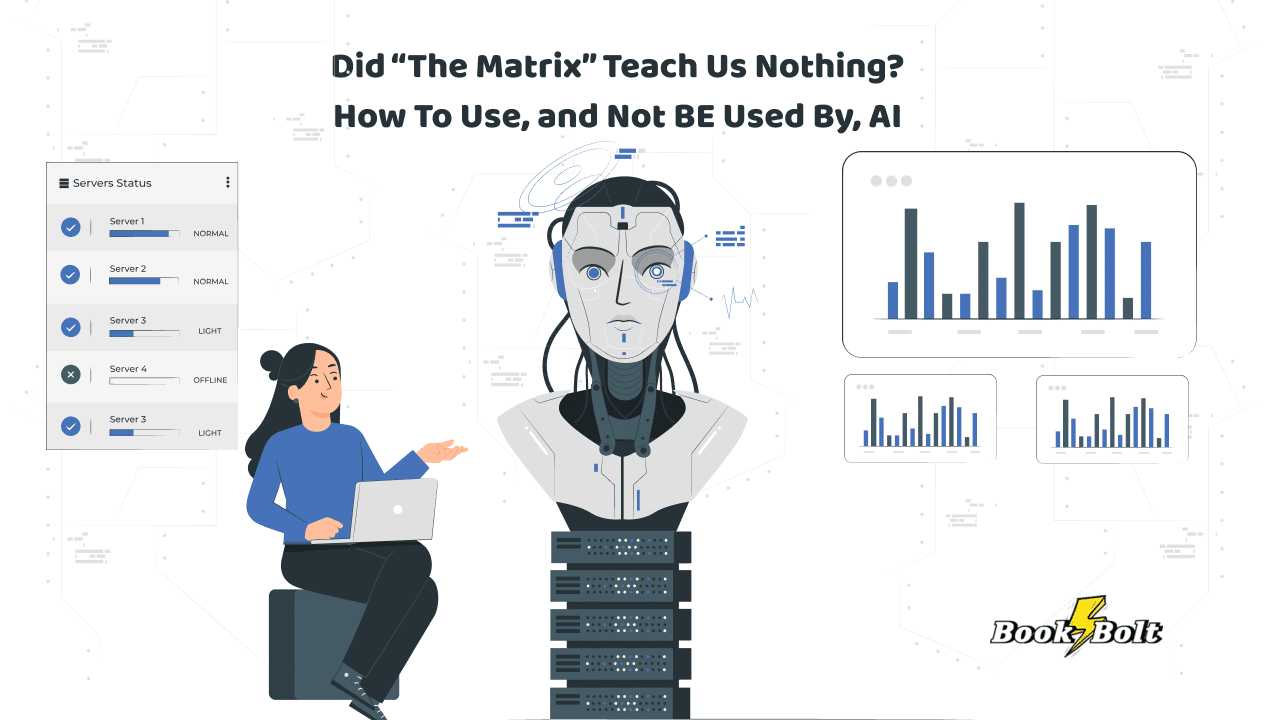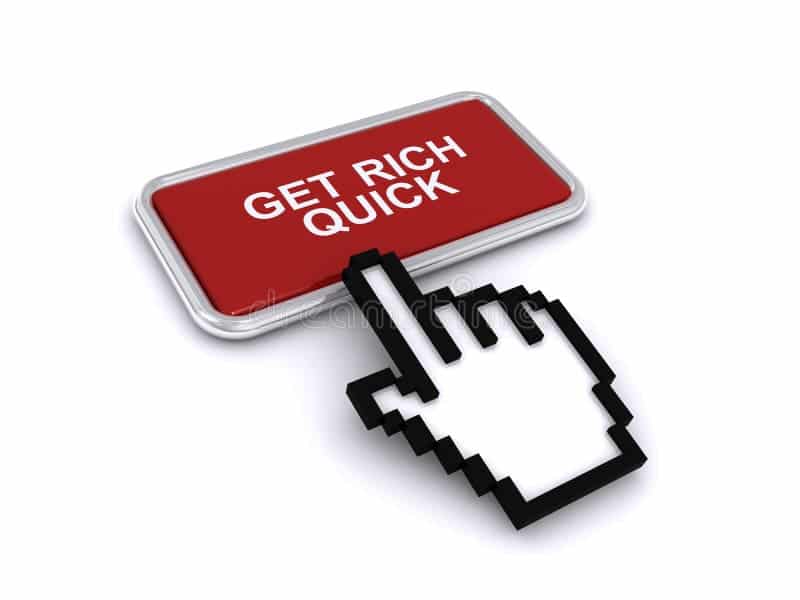
You knew this topic was coming eventually, didn’t you.
The advent of AI in the creative world happened fast and is impacting everything to the point where we can’t ignore it as a topic any longer.
Simply put, you can’t trust AI.
No, not because it’s going to transform your web-connected refrigerator into a death-machine, but because it’s simply unreliable as a tool that will supposedly “do all the work for you.” And sadly, it is that misconception that is getting a lot of people in trouble and, frankly, turning public perception against what is actually a valuable tool.
(By now, my friends in the WGA have stopped reading this article. That’s fine, they never liked my stuff anyway.)
In other blogs, we’ve written about how get-rich-quick’ers and algorithm-gamers have flooded this once quaint option for those of us to publish without having to consider gatekeepers. They did so because of the low barrier to entry. Now there are small garage-businesses based solely on convincing people that they can retire if they publish a thousand no-content books a week, and they are happy to churn through their webinar fees and ebook micropayments and subscriptions because, for every ten people who pay and cancel, there are 20 more people who will buy this malarkey.
That was just in the low/no-content space. Now, the misconception of AI’s capabilities have convinced people that they can push a button and spurt out medium or high content books like the chocolate spigot in the Pepperidge Farm Swiss Fudge cookie factory.
Would you live in your toolbox? No. But would you use it to build something? Yes.
AI is just another tool. It can save time. It is the crucifix against the terrifying confidence-vampire that is the blank page. It can jog your creativity, give you something concrete to look at so you can bend it into a shape that looks more like what was stuck in your head but couldn’t get out. It is not a creator. YOU are the creator. AI is something you create with, not something that creates for you.
Some Bad Apples
Well, for every Jonas Salk, there’s a Victor Frankenstein. Let’s look at some folks who tried to cheat the creative process, only to have made a monster that destroyed them.
A salesman in upstate New York stumbled upon ChatGPT and the allure of writing a book suddenly seemed attainable. His journey with this AI software led to the creation of a 30-page illustrated children’s e-book in just a matter of hours. His creation involved a wise forest animal who taught kids how to save and invest. He published it through KDP, not thinking about checking to see if similar works existed.
Sure enough, not only was there a similar book series, it involved the exact same kind of animal, the same idea about saving and investing, and the animal even had the same name.
Unlike our Willy Loman-turned-Stephen King, the author of the original series was distributed by a major publishing house. And that was the end of THAT story.
Then there was another children’s book KDP publisher who wanted to make an activity book involving pictures of funny animals. Turning to one of the many AI art programs available, he entered a search term and the AI cranked out a plethora of beautiful cartoon-style animals. He assembled them and published them on KDP, until a studio who owned the animated characters that the AI plucked came down hard. Cowabunga!
Even The Transporter On “Star Trek” Requires A Human Operator…
Folks, AI is not really creating anything. It’s an elaborate search engine that pulls from countless words and images on the internet and then melts them together into something that seems beautiful and perfect at first but then causes nothing but chaos and destruction if used carelessly. Like Jeff Goldblum in “The Fly.”
The learning process of AI, like ChatGPT and MidJourney, involves scanning vast volumes of existing text and images, raising questions about originality and potential plagiarism.
The rapid adoption of ChatGPT and similar tools poses a significant threat to traditional authors. Writers are now competing with a deluge of AI-generated books that cater to diverse subjects, from get-rich-quick schemes to dieting advice, software coding tips, and recipes. The sudden influx of such content has raised concerns within the writing community. The Authors Guild cites the need for transparency among authors and platforms to address the potential inundation of low-quality books.
And Here Comes Robocop…
As a KDP’er who may be tempted or misled by the promise of AI, you should be forewarned that your gracious host and publishing platform is not going to stand for it much longer.
Amazon, the dominant player in both physical and e-book sales, wields immense influence over the publishing industry. KDP has empowered countless authors to self-publish their works without the constraints of traditional publishing routes. Authors can publish their content instantly, sharing their earnings with Amazon.
In response to the rapid evolution of generative AI and its impact on the publishing industry, Amazon recently introduced new rules and guidance for Kindle books generated by AI tools. Authors are now required to disclose whether their content is AI-generated when publishing or making edits through KDP. While the guidelines outline definitions for AI-generated and AI-assisted content, they do not compel sellers to disclose AI assistance in content creation.
Moreover, AI-based tools are allowed for brainstorming and idea generation without mandatory disclosure, provided that the ultimate text or images are created by human authors. Sellers are also responsible for reviewing and editing AI-generated content to ensure compliance with intellectual property rights.
Amazon’s proactive stance in monitoring the influence of generative AI underscores its commitment to providing the best possible reading and publishing experience. The company continues to prioritize the interests of authors, publishers, and readers, acknowledging the need to balance innovation with transparency.
As AI-generated e-books continue to proliferate on Amazon, the publishing landscape faces a transformative juncture. While the threat to traditional authors looms large, the burgeoning accessibility of publishing through AI also fosters creative opportunities for aspiring writers. Ultimately, the future of publishing lies in the dynamic interplay between human creativity and the limitless potential of AI-powered authorship.
Remember, you’re supposed to use a hammer to hit a nail to build something. Don’t trust the hammer to know what it’s supposed to hit, or you’ll end up with broken thumbs.
And you’re gonna need those to write with.




